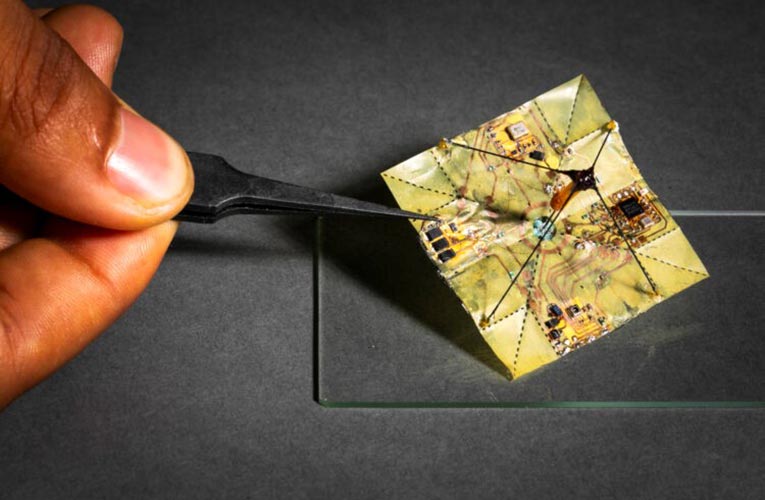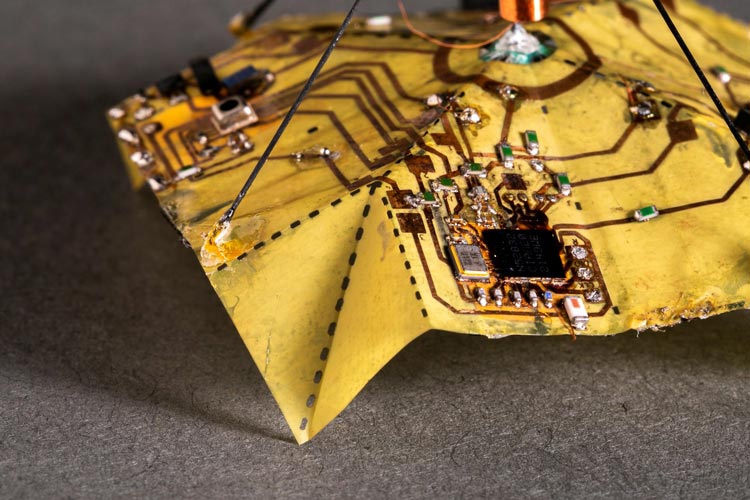
Scientists at Washington University have created small robotic devices capable of adjusting their aerial movement by adopting a folded posture as they fall. These " microfliers," when released from drones, employ a specific origami technique, the Miura-ori fold, to transition from a scattered, tumbling motion to a direct downward fall. The researchers manage the precise moment of transition for each glider using various approaches such as inbuilt pressure sensors (for altitude approximation), timers, or Bluetooth signals.
Weighing roughly 400 milligrams, which is about half the weight of a standard nail, these microfliers can cover the length of a soccer field when released from an altitude of approximately 40 meters in mild wind conditions. They come equipped with a battery-free mechanism, a power-harvesting circuit, and a controlling device that activates the in-flight shape modifications. Furthermore, they can be fitted with sensors to measure parameters like temperature and humidity during flight. Addressing many design complexities, these robots:
- Possess sufficient rigidity to prevent premature transition to their folded form.
- Swiftly toggle between their configurations. The inbuilt mechanisms take a mere 25 milliseconds to commence the folding process.
- Adapt their structure without being linked to an external power supply, as their solar circuitry draws power for the mechanism from sunlight.

The circuits are assembled and patterned directly onto the flexible material that makes up the microfliers. As of now, these microfliers can only modify their shape in one direction — from a scattering motion to a direct fall. This alteration enables the simultaneous controlled descent of multiple gliders, ensuring they spread out in varied directions during their descent. However, the team anticipates future versions will transition in both directions, enhancing accuracy during landings, especially in unpredictable wind scenarios.

